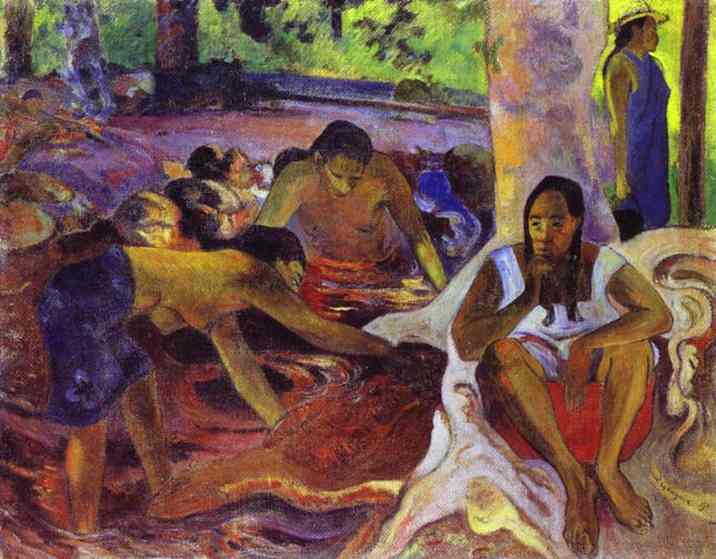Descrição
In The Fisherwomen of Tahiti (1891), Paul Gauguin captures a moment of everyday work that transcends the banal to become a meditation on life in a society far removed from Western conventions. This emblematic work of Gauguin's Tahitian period is not only a testament to his interest in Polynesian culture and landscape, but also a manifestation of his aesthetic and spiritual quest.
The composition of this painting focuses on three women engaged in the work of collecting shellfish on the beach. Their figures are arranged in the foreground, while the background shows a vibrant and lush natural landscape that highlights the richness of the Tahitian environment. Gauguin uses a grouping of figures that promotes visual dialogue between them, creating a sense of community in the laborious act of fishing. The women, with dark skin and dressed in simple local clothing, embody a connection with the land and the sea, a recurring theme in the artist's work.
The use of color in “The Fisherwomen of Tahiti” is fundamental to understanding the atmosphere that radiates from the work. Gauguin opts for a bright, saturated palette that defies the conventions of naturalistic color. The deep blues of the sea and sky are contrasted with the bright greens and yellows of the vegetation, creating an environment full of life and warmth. The choice of colors is not merely representational; it also reflects the emotion and spirituality that Gauguin sought in his art. The vibrant hues combine to create a visual experience that evokes the intensity of the Tahitian landscape, suggesting a sense of mysticism that transcends the simple act of fishing.
Each of the fisherwomen’s faces is roughly modeled, reflecting the influence of sculpture and indigenous artistic traditions. This stylization is aligned with Gauguin’s quest for an art form that moves away from naturalistic representation and into the symbolic. Through his loose, contoured strokes, the artist invites us to contemplate not only the image, but also the stories and meanings that emanate from the figures depicted. The three fisherwomen become archetypes of femininity, work, and an unbreakable connection to their environment.
Gauguin was not simply interested in illustrating Tahitian life, but used his experience on the island as a means to explore deeper themes such as identity, spirituality, and the search for the exotic and primitive. The Fisherwomen of Tahiti is a reflection of his transition to a more spiritual and symbolic style, where emotional and psychological content takes precedence over mere representation. This approach can be compared to other works from his Tahitian period, where economy of form and vibrant coloring abandon traditional narratives in favor of a more visceral and direct experience.
Through this work, Gauguin positions himself as an innovator who challenges the conventions of Western art in the late 19th century, establishing a link between art and cultural authenticity. The Fisherwomen of Tahiti is not just an image of women at work, but a testament to the profound interrelationship between human beings and their environment, a theme that continues to resonate in contemporary art. When looking at this painting, we are invited to reflect on the relationship between culture, work and life experience, reminding us that the everyday can be a portal to the sublime.
KUADROS ©, a famous painting on your wall.
Hand-made oil painting reproductions, with the quality of professional artists and the distinctive seal of KUADROS ©.
Painting reproduction service with satisfaction guarantee. If you are not completely satisfied with the replica of your painting, we will refund 100% of your money.

